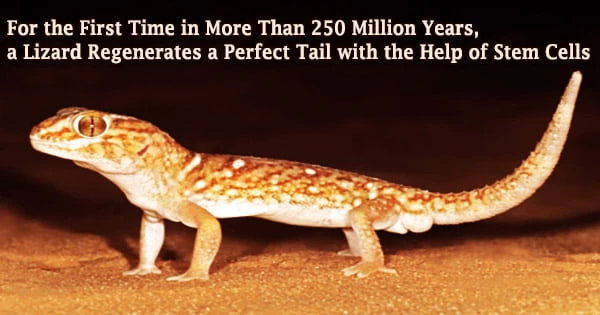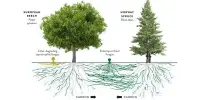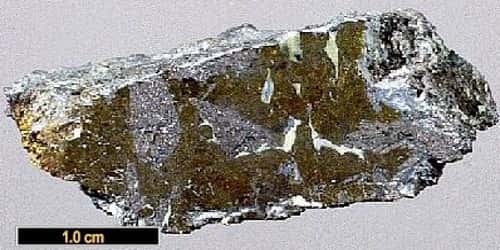Lizards can regrow their severed tails, making them the closest living relative to humans who can do so. The new structure, however, is an incomplete cartilage tube, rather than the original tail, which included a spinal column and nerves.
For the first time, a study led by the University of Southern California and published in Nature Communications reveals how stem cells might help lizards rebuild better tails. Lizards are amniotes that have the amazing ability to regrow their amputated tails.
The blastema occurs on the early regenerated lizard tail, and the regenerated skeleton is made up of a cartilage tube (CT) that surrounds the regenerated spinal cord. The proximal CT ossifies and hypertrophy, but not the distal CT.
“This is one of the only cases where the regeneration of an appendage has been significantly improved through stem cell-based therapy in any reptile, bird or mammal, and it informs efforts to improve wound healing in humans,” said the study’s corresponding author Thomas Lozito, an assistant professor of orthopedic surgery and stem cell biology and regenerative medicine at the Keck School of Medicine of USC.
As adults, lizards have the greater regenerating ability of musculoskeletal tissues, making them the closest cousins of mammals. Lizards, like mammals, follow the same basic blueprints for development, bone ossification, and wound healing, but they can regenerate amputated tails, a trait they share with urodelian amphibians.
These new and improved lizard tails contain “dorsoventral patterning,” which means that the upper or dorsal side has skeletal and nerve tissue, while the bottom or ventral side has cartilage tissue.
Because of many important morphological variations between the regenerated and original tails, regenerated lizard tails are characterized as imperfect duplicates. The bones of regenerated lizard tails are virtually entirely cartilaginous.
Lizards have been around for more than 250 million years, and in all that time no lizard has ever regrown a tail with dorsoventral patterning, until now. My lab has created the first regenerated lizard tails with patterned skeletons.
Thomas Lozito
The original tail’s vertebrae are made up of a single, unsegmented cartilage tube (CT), and the great majority of the lizard CT resists ossification for the rest of the lizard’s life.
“Lizards have been around for more than 250 million years, and in all that time no lizard has ever regrown a tail with dorsoventral patterning, until now,” said Lozito. “My lab has created the first regenerated lizard tails with patterned skeletons.”
To do so, a team of experts from the USC and University of Pittsburgh medical schools compared how lizard tails evolve during adult regeneration to embryonic development. Neural stem cells, or NSCs, the stem cells that form the nervous system, play a key role in both circumstances.
Adult NSCs create a chemical signal that inhibits skeletal and nerve development while promoting cartilage growth, effectively “ventralizing” both sides of the tail. This produces the cartilage tube that is characteristic of regenerated tails.
Adult NSCs are unable to generate new nerve tissue on the dorsal side of the tail even in the absence of this ventralizing signal.
Embryonic NSCs, on the other hand, only produce this “ventralizing” signal in the cartilage region that forms the tail’s bottom or ventral side. Meanwhile, the top or dorsal side grows skeletal and neural tissue in the absence of this signal.
As a result, the tail develops the complex dorsoventral patterning seen in embryonic appendages.
Embryonic NSCs placed into adult tail stumps, on the other hand, respond to the ventralizing signal and do not grow into dorsal structures.
To circumvent these challenges, Lozito’s team used gene editing methods to render embryonic NSCs insensitive to the ventralizing signal, then surgically implanted these cells into adult tail stumps, resulting in the regeneration of complete tails.
“This study has provided us with essential practice on how to improve an organism’s regenerative potential,” said Lozito.
“Perfecting the imperfect regenerated lizard tail provides us with a blueprint for improving healing in wounds that don’t naturally regenerate, such as severed human limbs and spinal cords. In this way, we hope our lizard research will lead to medical breakthroughs for treating hard-to-heal injuries.”
Ricardo Londono and Aaron X. Sun of the University of Pittsburgh School of Medicine, as well as Megan L. Hudnall of USC, are also co-authors.
The National Institute of General Medical Sciences, one of the National Institutes of Health, funded the research through grant R01GM115444.
















